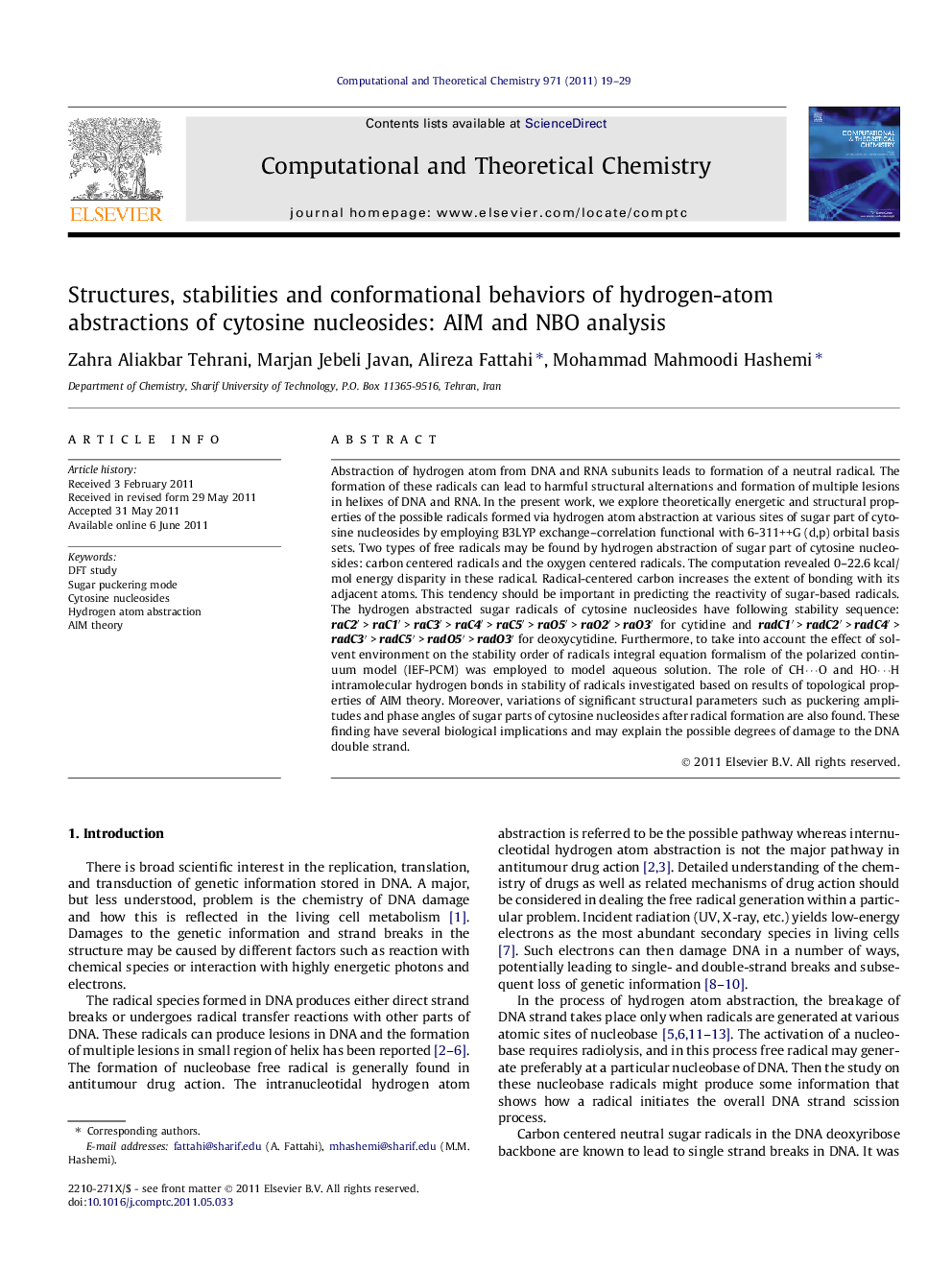| Article ID | Journal | Published Year | Pages | File Type |
|---|---|---|---|---|
| 5395057 | Computational and Theoretical Chemistry | 2011 | 11 Pages |
Abstract
ion of hydrogen atom from DNA and RNA subunits leads to formation of a neutral radical. The formation of these radicals can lead to harmful structural alternations and formation of multiple lesions in helixes of DNA and RNA. In the present work, we explore theoretically energetic and structural properties of the possible radicals formed via hydrogen atom abstraction at various sites of sugar part of cytosine nucleosides by employing B3LYP exchange-correlation functional with 6-311++G (d,p) orbital basis sets. Two types of free radicals may be found by hydrogen abstraction of sugar part of cytosine nucleosides: carbon centered radicals and the oxygen centered radicals. The computation revealed 0-22.6 kcal/mol energy disparity in these radical. Radical-centered carbon increases the extent of bonding with its adjacent atoms. This tendency should be important in predicting the reactivity of sugar-based radicals. The hydrogen abstracted sugar radicals of cytosine nucleosides have following stability sequence: raC2â²Â > raC1â²Â > raC3â²Â > raC4â²Â > raC5â²Â > raO5â²Â > raO2â²Â > raO3â² for cytidine and radC1â²Â > radC2â²Â > radC4â²Â > radC3â²Â > radC5â²Â > radO5â²Â > radO3â² for deoxycytidine. Furthermore, to take into account the effect of solvent environment on the stability order of radicals integral equation formalism of the polarized continuum model (IEF-PCM) was employed to model aqueous solution. The role of CHâ¯O and HOâ¯H intramolecular hydrogen bonds in stability of radicals investigated based on results of topological properties of AIM theory. Moreover, variations of significant structural parameters such as puckering amplitudes and phase angles of sugar parts of cytosine nucleosides after radical formation are also found. These finding have several biological implications and may explain the possible degrees of damage to the DNA double strand.
Related Topics
Physical Sciences and Engineering
Chemistry
Physical and Theoretical Chemistry
Authors
Zahra Aliakbar Tehrani, Marjan Jebeli Javan, Alireza Fattahi, Mohammad Mahmoodi Hashemi,
